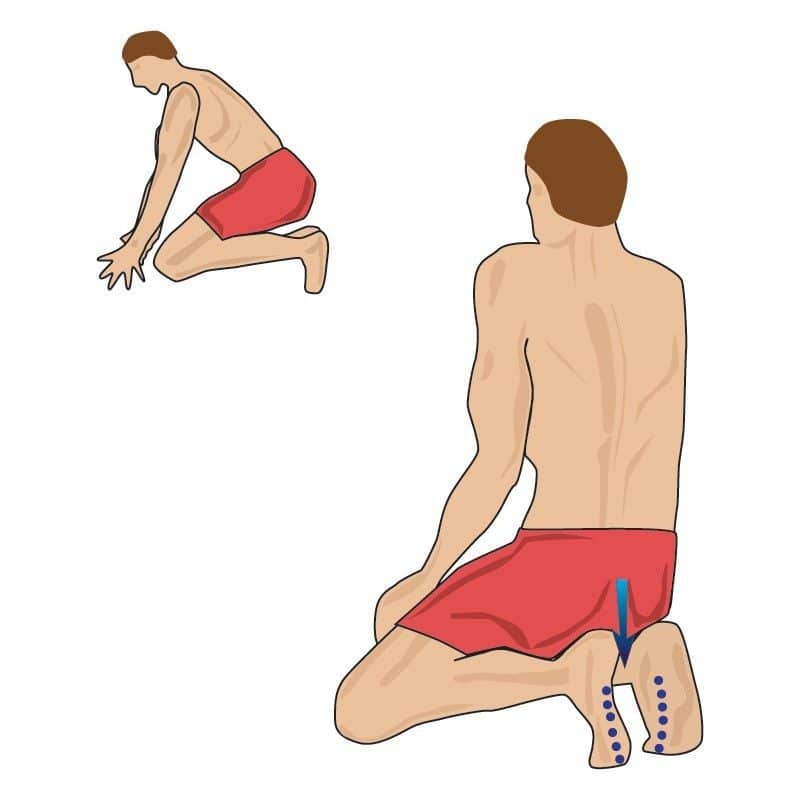Plantar Fascia Stretch
What muscles does the Plantar Fascia stretch target?
Plantar Fascia
RLong Flexors of the toes (Flexor Hallucis Longus and Flexor Digitorum Longus)
How to perform stretch:
Kneel down with your toes bending upwards
Lower your buttocks towards your heels
Apply pressure to your heels until a stretch in the arch of your foot and the Achilles tendon region is felt

Anatomy:
The plantar arch and the toe flexors are stretched along with Achilles tendon.
Muscles responsible for inversion (inward twisting) of the foot and plantar flexion at the ankle include Tibialis Posterior, Flexor Hallucis Longus and Flexor Digitorum Longus. The latter two have long tendons that travel beneath the sole of the foot extending up to the toes and cause flexion of the toes.
Tibialis Posterior acts to stabilize the longitudinal arch of the foot. Other small muscles that flex the toes and impart essential postural stability to the foot include Flexor Digitorum Brevis, Flexor Hallucis Brevis, Flexor Digiti Minimi Brevis, Lumbricals, Plantar Interosseous and Quadratus Plantae.
A dense sheath of fibrous tissue (fascia) runs beneath the sole of the foot, from the heel to the toes. Beneath this fascia are present numerous ligaments that join and support the different bones of the foot together in the form of an arch.
Advantages:
It helps to relieve stiffness in the sole of the foot, especially beneficial for the treatment of Plantar Fasciitis (pain in the heel or the sole of the foot) and Shin Splints (pain along the inside of the lower end of tibia).
Regular Movement:
The ankle joint stretches almost fully, causing compression at the front of the ankle.
The ankle flexes up to about 20 degrees from normal standing position, further joint mobility restricted by the stretch in the calf muscle.
Plantar arch, fascia and the ligaments should all stretch tightly.
Toes flex from 54 to 73 degrees.





